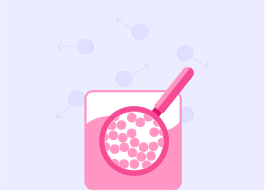YOU ARE LEARNING:
Forces and Distance Between Models

Forces and Distance Between Models
You can use density to describe the arrangement of particles in different states of matter i.e. solid, liquid and gas.
Do you know what the 3 states of matter are? Select 3 options from the list below.

You can select multiple answers
Which of the following do you think best describes the arrangement of particles in a solid?

Which of the following do you think best describes the arrangement of particles in a liquid?

Have a good look at this image.
It shows the structure of a solid, a liquid and a gas.

Given the image shown on the previous slide, which of the 3 states of matter do you think is the most dense.

Why is a solid more dense than a liquid or gas? Pick all the options that you think are correct.

You can select multiple answers
To sum up, because the particles in a solid are closer together than in a liquid and a gas a solid is the most dense of the 3. This is because there is less of a gap between the particles, so there is more of a material in a set volume.
True or false? The particles in a solid are always arranged the same, no matter what the solid is?

True or false? A solid is always denser than a liquid.

To sum up, an object will float if the **** density of the **** object is less than the density of the liquid it is placed in. This does not mean that the object is **** lighter than the liquid. It just means that it is less dense. Some solids are not very dense.
